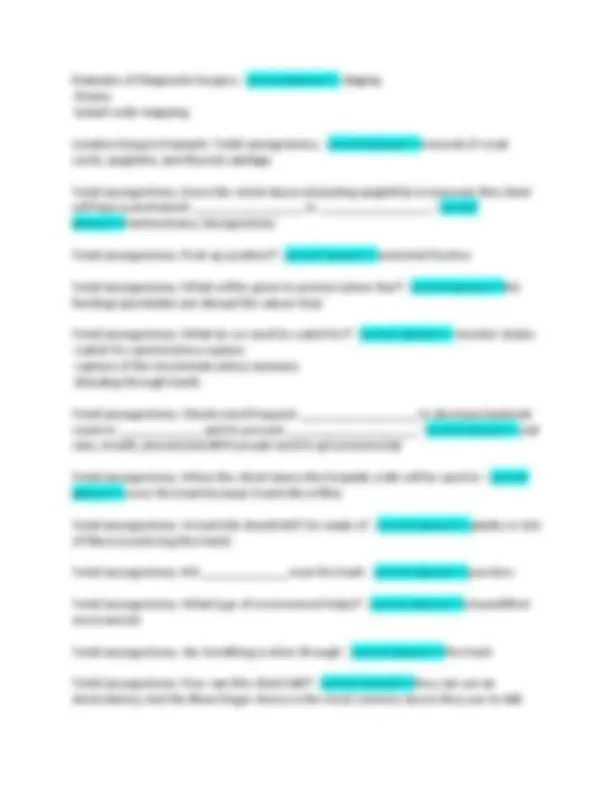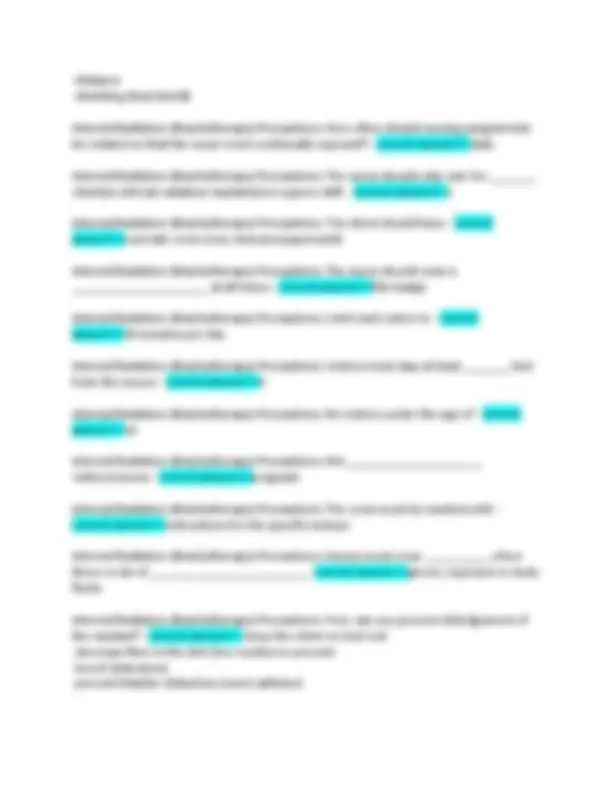








Study with the several resources on Docsity

Earn points by helping other students or get them with a premium plan


Prepare for your exams
Study with the several resources on Docsity

Earn points to download
Earn points by helping other students or get them with a premium plan
Community
Ask the community for help and clear up your study doubts
Discover the best universities in your country according to Docsity users
Free resources
Download our free guides on studying techniques, anxiety management strategies, and thesis advice from Docsity tutors
The #1 cause of preventable cancer - correct answer>>tobacco Co-carcinogens - correct answer>>Alcohol & tobacco Suspected dietary causes of cancer - correct answer>>-a low-fiber diet -increased red meat -increased animal fat -nitrites (processed sandwich meats) -alcohol -preservatives and additives Increased incidence of cancer in the - correct answer>>immunosuppressed The most important risk factor for cancer is - correct answer>>aging Higher risk of cancer in those aged over - correct answer>>60 years old What race has the greatest incidence of cancer? - correct answer>>African-Americans followed by Caucasians Other risk factors for cancer development - correct answer>>-obesity -physical inactivity -poor nutrition -heredity (ex. BRC-1 gene) -exposure to UV radiation -exposure to carcinogens -stress -previous medical history Chronic irritation can cause - correct answer>>uncontrolled growth of abnormal cells
Typology: Exams
1 / 10

This page cannot be seen from the preview
Don't miss anything!







The #1 cause of preventable cancer - correct answer>>tobacco Co-carcinogens - correct answer>>Alcohol & tobacco Suspected dietary causes of cancer - correct answer>>-a low-fiber diet
Examples of Diagnostic Surgery - correct answer>>-staging
External Radiation: You can NOT ______________ the markings - correct answer>>wash off External Radiation: Can you use lotion on the markings? - correct answer>>NO External Radiation: The site must be protected from _____________ and ________________ for _____ year(s) after completion of therapy d/t the skin's fragility - correct answer>>sunlight; UV exposure; 1 External Radiation: We must provide good - correct answer>>skin care